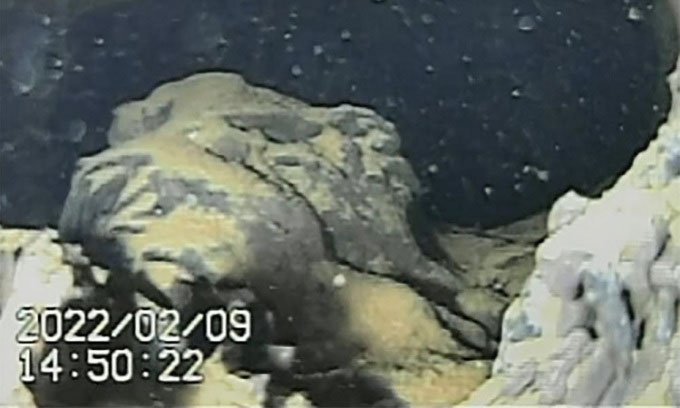A remote-controlled robot captures images of the melted nuclear fuel debris at the bottom of the most heavily damaged reactor at the Fukushima power plant.

Melted nuclear fuel debris in Reactor No. 1. (Photo: TEPCO).
The powerful earthquake and tsunami in 2011 destroyed the cooling systems at the power plant, causing the core of Reactor 3 to melt down. Most of the highly radioactive fuel fell to the bottom of the reactor containment vessel, making removal extremely challenging. Authorities previously attempted to send a small robot equipped with a camera into Reactor No. 1 but were unsuccessful. However, images captured earlier this week by the ROV-A robot revealed broken structures, pipes, melted fuel debris, and various other wreckage submerged in cold water, according to a statement from the plant’s operator, Tokyo Electric Power Company (TEPCO), on February 10.
Approximately 900 tons of melted nuclear fuel remain inside the three damaged reactors at the plant, including about 280 tons in Reactor No. 1. The removal process is expected to be a daunting task, estimated to take 30 to 40 years under optimistic projections. The robot, equipped with several small cameras, photographed the interior of the reactor containment vessel to pave the way for future exploration vehicles, TEPCO reported.
Kenichi Takahara, a spokesperson for TEPCO, shared that the debris piles protruding from the bottom of the containment vessel, including within the pedestal directly beneath the reactor core, indicate that the fuel has melted down into this area. According to Takahara, the company will deploy additional exploration vehicles to confirm the objects seen in the images. At one location, the robot detected radiation levels at 2 sieverts, which can be life-threatening. The annual exposure limit for power plant workers is 50 millisieverts.
The reactor exploration robot began operations on February 8 and is the first robot to reach this area since 2017. Previously, another robot failed to capture images of the melted fuel due to excessively high radiation levels and damage to the internal structure. The fuel in Reactor No. 1 is submerged in highly radioactive water, at a depth of 2 meters. TEPCO stated that they will deploy other exploration vehicles after analyzing the data and images collected by the first robot.
Five additional robots, co-developed by Hitachi-GE Nuclear Energy and the Nuclear Decommissioning Research Institute, will be used in the coming months. The research project in Reactor No. 1 aims to measure the melted fuel debris, create three-dimensional maps, analyze isotopes and radiation levels, and collect samples. These factors are crucial for developing safe and effective methods and equipment for removing melted fuel, enabling the complete decommissioning of the reactor.
TEPCO hopes to use robotic arms by the end of this year to remove melted fuel from Reactor No. 2, where the exploration robot has made the most progress.

















































